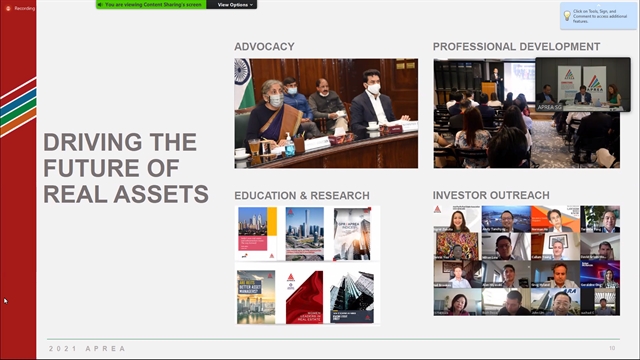Real assets are a play into the region’s structural megatrends that will outlive the pandemic, the Asia Pacific Real Estate Association has predicted.

Real assets are a play into the region’s structural megatrends that will outlive the pandemic, the Asia Pacific Real Estate Association has predicted.
Asia’s economic transformation over the past 60 years has been unprecedented with the 21st century being described as the ‘Asian Century,’ it told an online meeting on Tuesday.
Despite the turmoil caused by the pandemic, Asia remains the locus of future global growth and is expected to have the largest economies in the world including China, Japan, India, and ASEAN by 2030 and beyond, it said.
Driven by demographic tailwinds, it said, urbanisation in the Asia Pacific is an epic boom that would drive the growth of its middle class and, with it, a cycle of rising consumption.
It quoted a report by the Asian Development Bank which estimates that the region will need to invest US$26 trillion between 2016 and 2030 to maintain its growth momentum, eradicate poverty and respond to climate change, or US$1.7 trillion a year until the end of this decade.
But currently only around $900 million is estimated to be invested annually.
In other words, if policies are conducive for the private sector to step in to fill this void, the Asia Pacific provides an infrastructure investment opportunity worth over $8 trillion over the next 10 years, the association said.
John Lim, chairman of APREA and co-founder and deputy chairman of ARA Asset Management Limited, said: “Infrastructure is ultimately what translates the impact of urbanisation into benefits for real estate. With the requirements needed by the rapidly developing economies that will eventually host more than half of the world’s megacities, investments in infrastructure development in the Asia Pacific is a cycle that will be played out over decades.”
Infrastructure requirements are expected to increase exponentially, thus enabling financing of these projects to gain traction, and there will be opportunities for the private sector to participate as many of the infrastructure initiatives align with ESG allocations, re-development, connectivity, and economic growth, he said.
The economic ambitions of the region would provide the necessary impetus for infrastructure spending and lift it out of the coronavirus slump, he said.
APREA chief executive officer Sigrid Zialcita said: “As it stands, Southeast Asia’s $2.4 trillion economy is the seventh-largest in the world and is forecast to jump to fourth largest in Asia Pacific by 2050. Its workforce will grow by a further 60 million while its urban population is expected to rise by an additional 90 million by 2030. The reality is that ASEAN needs infrastructure development if it wants to sustain its economic growth.”
According to APREA, by 2030 seven of the world’s 10 largest megacities will be in the Asia Pacific.
“The benefits of investing in institutionalised assets will be more evident as the world inches towards a post-pandemic future,” Lim said.
“Allocations to the region from global investors can only continue to rise and the securitisation of the very assets so critical in driving its growth will be a massive investment opportunity. Asia Pacific remains primed to take advantage of this revolution in real assets. APREA’s goal is to pave the way for the advancement of investment opportunities into the region’s real assets.” — VNS





